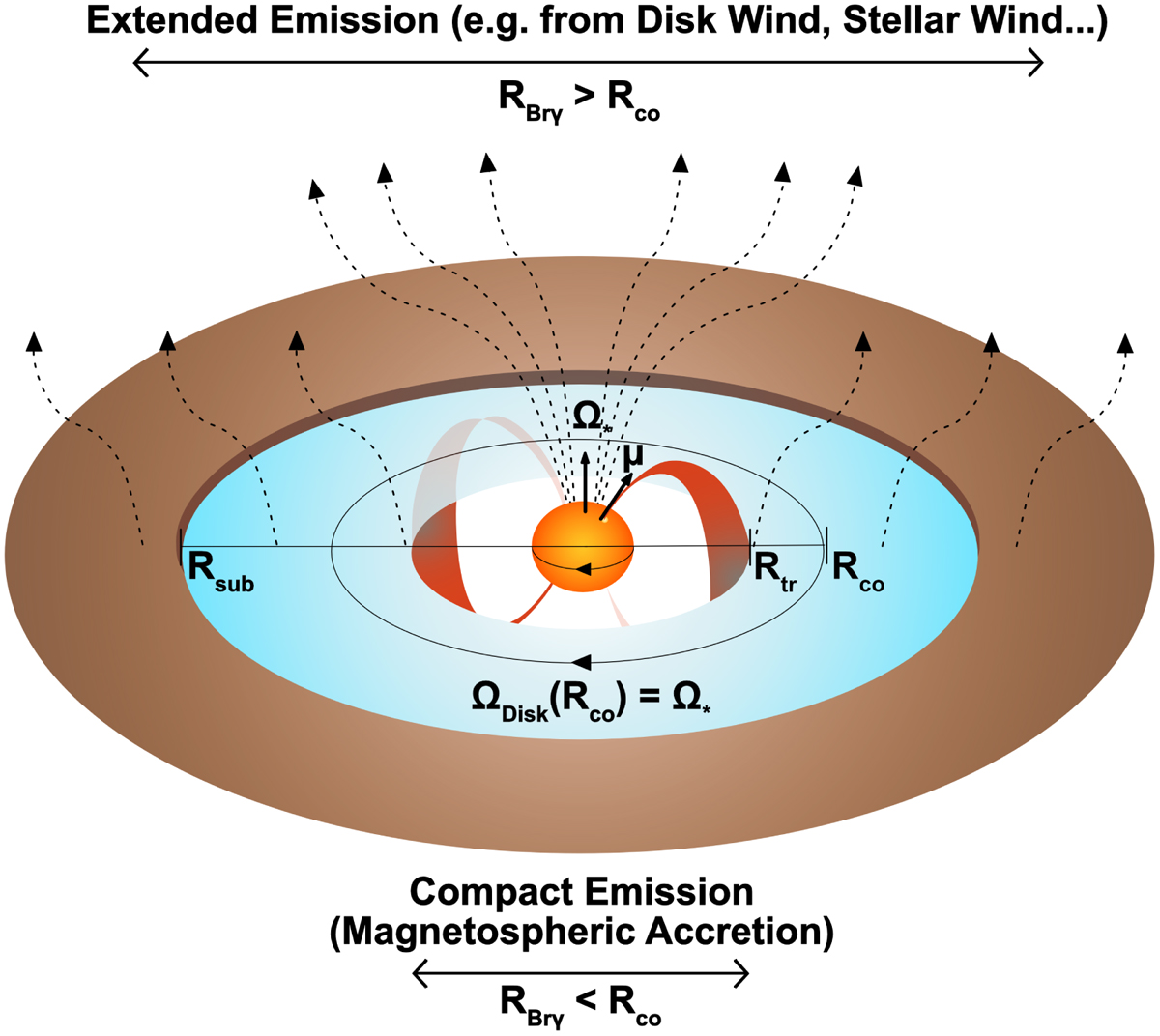Fig. 1

Download original image
Schematic depiction of the innermost parts of the circumstellar disk of a T Tauri star. Brγ emission in T Tauri stars is associated with the concept of magnetospheric accretion, but outflows caused by certain types of disk or stellar winds (dashed lines) can heat the hydrogen gas to the necessary temperatures to produce Brγ emission as well. Different origin mechanisms can be tied to different spatial scales. Magnetospheric accretion flows (depicted in red) can only stably form in a compact region within the co-rotation radius Rco, where the gaseous disk rotates at the same angular velocity γ as the star. Spatially extended Brγ emission from outside Rco cannot be attributed to magnetospheric accretion and must be caused by some other emission component. This figure specifically shows the common case of a non-axisymmetric magnetosphere, featuring a tilt between the stellar rotational axis γ* and the magnetic dipole µ. The obliquity of the magnetosphere leads to the formation of two accretion columns, which funnel gas from a wide arc at the truncation radius onto one primary hot spot per hemisphere, as first suggested in Bertout et al. (1988) and Calvet & Hartmann (1992). The equations and physical quantities relevant for the determination of the co-rotation radius Rco and the magnetic truncation radius Rtr are discussed in Sect. 5. For the equations used to estimate the sublimation radius Rsub, which indicates the area at which the disk becomes sufficiently hot to destroy dust grains, we refer to GRAVITY Collaboration (2021b).
Current usage metrics show cumulative count of Article Views (full-text article views including HTML views, PDF and ePub downloads, according to the available data) and Abstracts Views on Vision4Press platform.
Data correspond to usage on the plateform after 2015. The current usage metrics is available 48-96 hours after online publication and is updated daily on week days.
Initial download of the metrics may take a while.


